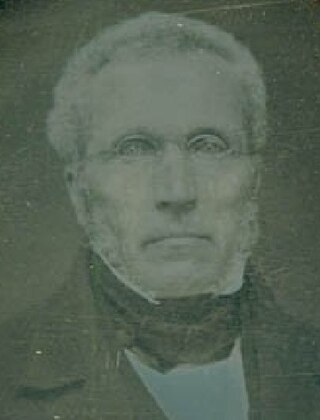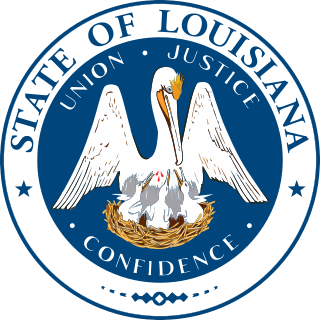The Anti-Masonic Party was the earliest third party in the United States. Formally a single-issue party, it strongly opposed Freemasonry in the United States. It was active from the late 1820s, especially in the Northeast, and later attempted to become a major party by expanding its platform to take positions on other issues. It declined quickly after 1832 as most members joined the new Whig Party; it disappeared after 1838.

The 1828–29 United States House of Representatives elections were held on various dates in various states between July 9, 1828, and October 5, 1829. Each state set its own date for its elections to the House of Representatives before the first session of the 21st United States Congress convened on December 7, 1829. Elections were held for all 213 seats, representing 24 states.

The 1826–27 United States House of Representatives elections were held on various dates in various states between July 3, 1826, and August 30, 1827. Each state set its own date for its elections to the House of Representatives before the first session of the 20th United States Congress convened on December 3, 1827. They occurred during John Quincy Adams's presidency. Elections were held for all 213 seats, representing 24 states.

Orsamus Cook Merrill was a U.S. Representative from Vermont.

The 1826–27 United States Senate elections were held on various dates in various states. As these U.S. Senate elections were prior to the ratification of the Seventeenth Amendment in 1913, senators were chosen by state legislatures. Senators were elected over a wide range of time throughout 1826 and 1827, and a seat may have been filled months late or remained vacant due to legislative deadlock. In these elections, terms were up for the senators in Class 1.

Pennsylvania elected its members October 10, 1826.
Massachusetts elected its members November 6, 1826. It required a majority for election, which was not met on the first vote in 3 districts requiring additional elections held March 5 and May 14, 1827.

On January 12, 1826, Patrick Farrelly (J) of Pennsylvania's 18th district died in office. A special election was held to fill the resulting vacancy

On May 1, 1826, Alexander Thomson (J) of Pennsylvania's 13th district resigned. A special election was held to fill the resulting vacancy on October 10, 1826, the same day as the general elections to the 20th Congress.

At some point in 1826, Joseph Hemphill (J) of Pennsylvania's 2nd district resigned from Congress. A special election was held to fill the resulting vacancy.

On August 14, 1826, Henry Wilson (J) of Pennsylvania's 7th district died. A special election was held to fill the resulting vacancy on October 10, 1826.

In the 1826 elections in Pennsylvania, a tie vote occurred in the 2nd district. As a result, no candidate won in that district and a special election was held on October 9, 1827.

Georgia elected its members October 2, 1826. Georgia switched to using districts for this election. Two incumbents, James Meriwether and George Cary, did not run for re-election.

Louisiana elected its members July 3–5, 1826.

Maine elected its members September 8, 1826. It required a majority for election, which was not met in the 7th district, requiring additional elections December 18, 1826, April 2, and September 27, 1827.

Ohio elected its members October 10, 1826.

Kentucky elected its members August 6, 1827, after the term began but before the new Congress convened.

North Carolina elected its members August 9, 1827, after the term began but before the new Congress convened.

Virginia elected its members April 30, 1827, after the term began but before the new Congress convened.
This page is based on this
Wikipedia article Text is available under the
CC BY-SA 4.0 license; additional terms may apply.
Images, videos and audio are available under their respective licenses.












